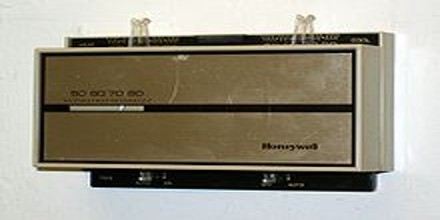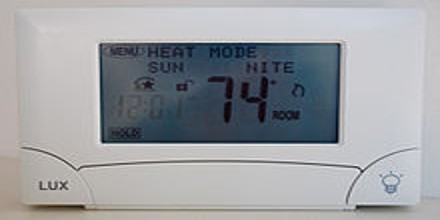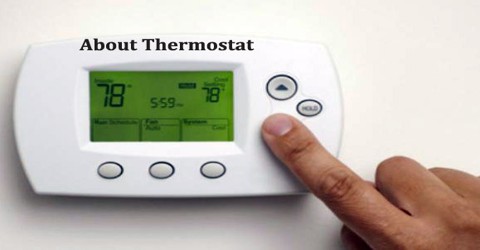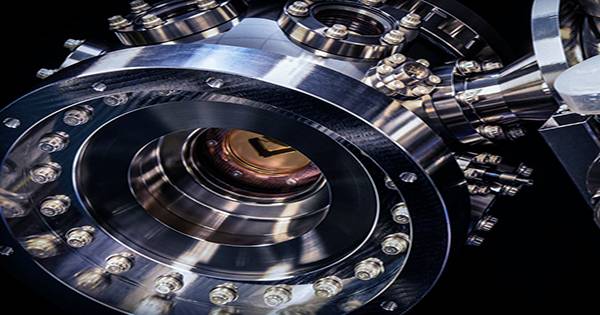About Thermostat
Definition
Thermostat is a device that maintains a system at a constant temperature. It often consists of a bimetallic strip that bends as it expands and contracts with temperature, thus breaking and making contact with an electrical power supply. It works by sensing the air temperature, switching on the heating when the air temperature falls below the thermostat setting, and switching it off once this set temperature has been reached. Turning a room thermostat to a higher setting will not make the room heat up any faster. How quickly the room heats up depends on the design of the heating system, for example, the size of boiler and radiators.

It is a “closed loop” control device, as it seeks to reduce the error between the desired and measured temperatures. Sometimes a thermostat combines both the sensing and control action elements of a controlled system, such as in an automotive thermostat. Thermostats are used in any device or system that heats or cools to a set-point temperature, examples include building heating, central heating, air conditioners, HVAC systems, as well as kitchen equipment including ovens and refrigerators and medical and scientific incubators.
Basic Thermostat Types –
Low-Voltage Thermostats: Typically used in central heating systems, low-voltage thermostats use oil, gas, and electricity. This type is relatively more energy efficient, accurate, and easy to control as it operates at a low voltage.
Line-Voltage Thermostats: Mainly used in single heating systems, line-voltage thermostats run at 240V to bring the room to the specified temperature. Both these variants are available in three options, programmable, mechanical, and electronic.

Types of Thermostats
There are actually only three different types of thermostats in the air conditioning and heating industry, each type has very specific characteristics.
Mechanical Thermostats –
Mechanical thermostats come in a variety of styles and types and can be used for heat only or for heating and cooling and some models come with multiple stages of heating and cooling. These thermostats are not able to switch from heating to cooling automatically, this is called an auto changeover while models with a separate set point for heat and cool usually will if set to auto.
Digital/Electronic Thermostats –
Electronic and digital thermostats are very similar and have a digital LCD (Liquid Crystal Display) temperature and set point display. Some are little more than a digital version of a mechanical thermostat but most have additional features and capabilities such as auto changeover. These thermostats are not programmable in most cases and usually support both heating and cooling. They also can be designed for either single stage or multiple stages of heating or cooling. In either case you need to be certain that the thermostat is compatible with your heating and cooling system.

Programmable Thermostats –
Programmable thermostats have all the options of their digital sisters. In addition, they allow the user to set a pre-determined timed setting using a built in clock and a little bit of memory. They come in options such as 7 day or 5+2 day as well as 2 and 4 periods.
Each can be programmed to change the temperature set point at a given point in time. The 7 day models allow each day to be programmed separately while the 5+2 day models are set up for weekday and weekend only. The number of periods determines how often you can set or change a set point at any given time.
Early technologies included mercury thermometers with electrodes inserted directly through the glass, so that when a certain (fixed) temperature was reached the contacts would be closed by the mercury. Common sensor technologies in use today include:
- Bimetallic mechanical or electrical sensors.
- Expanding wax pellets
- Electronic thermistors and semiconductor devices
- Electrical thermocouples

Benefits of Thermostat
An automated thermostat offers greater operational control and energy savings while keeping your home warm and comfortable. Some of other benefits are:
- Smart thermostat acts according to users preferences and automates the raising and dropping of the temperature by detecting their presence. This ensures that their HVAC system consumes less energy when they are not around and lowers their utility bills.
- The companion app that comes with a smart thermostat keeps a constant eye on user’s house and allows them to adjust the temperature from anywhere.
- Whether user are driving home from work or resting on their couch, user can control the thermostat if they have their mobile handy.
- A thermostat notifies you immediately in case of power outage and temperature fluctuations.
- Smart thermostats are user-friendly and designed with energy-efficient settings that save user a bundle on their energy bills.
















